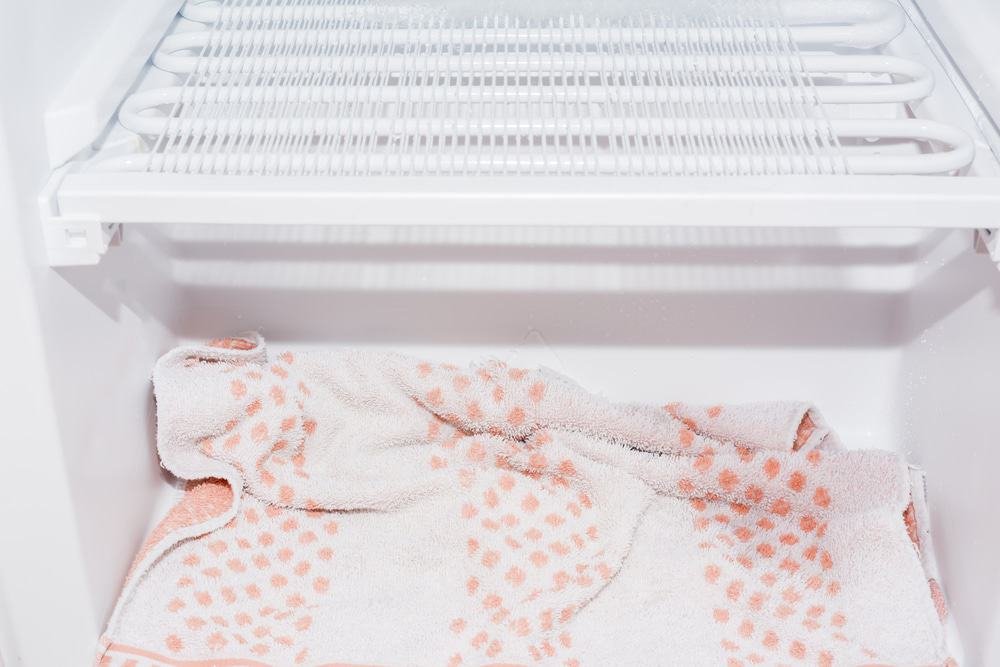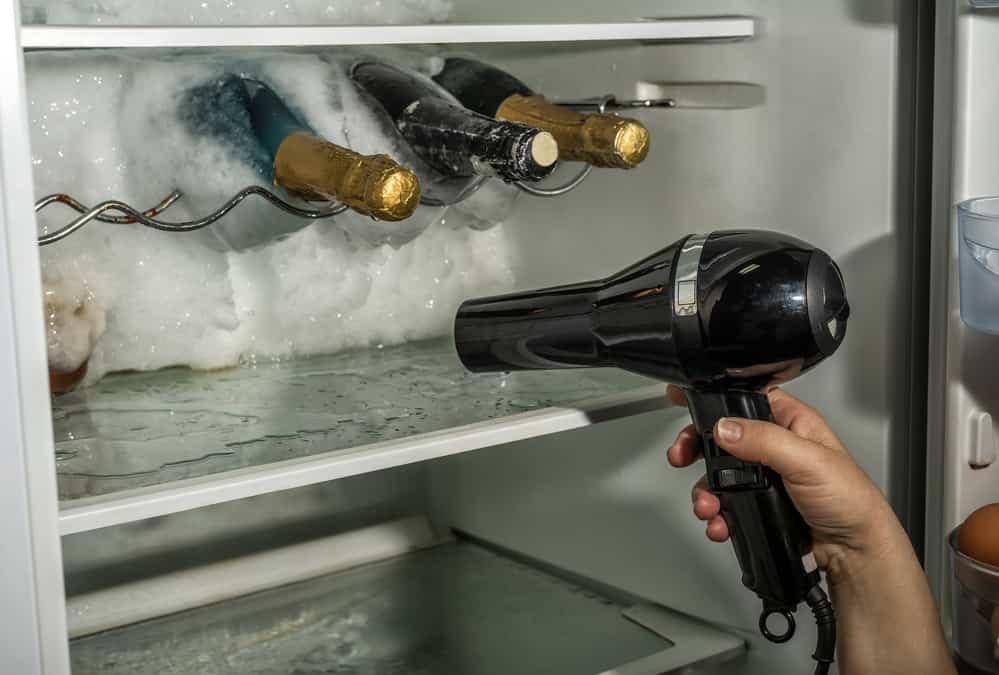When faced with the daunting task of defrosting a thickly iced freezer, it can be tempting to look for ways to speed up the process. If you wanted to defrost your car quickly, you’d use de-icer, so can you use it in your freezer?
Is It Safe to Use De-Icer In a Freezer?
You must never use a car windscreen de-icer in your freezer, as the chemicals would make the food inside unsafe to eat. However, there are de-icer products made specifically for use inside your freezer.
What Can You Use to Defrost a Freezer?
The best and safest way to defrost a freezer is simply to switch it off, leave it with the door open and plenty of towels in it and around it, and just wait for nature to do its thing.

However, this can take anywhere from 3 to 24 hours, depending on how badly frosted it has become, and if you have food that you don’t want to go to waste, you may want to hurry things along.
Check the instruction manual and see what the manufacturer recommends, and bear in mind that if you choose not to follow their instructions, you may risk invalidating your warranty.
Don’t be tempted to use sharp implements to hack away at the ice, as this could damage the freezer, and you could quickly end up hurting yourself.
A better choice is to use a rubber spatula or even an ice scraper from the car, but even this must be done with care and is best used alongside another method that will loosen the ice first.
Use Boiling Water to Defrost a Freezer
One such method is to place bowls of boiling water on the freezer’s shelves.
It’s a good idea to use Pyrex dishes if you have them, as they are specifically designed to tolerate changes in temperature, such as the difference between the boiling water within and the frozen shelf onto which you will be placing it.
The warmth from the bowl will melt the ice on the shelf, and the steam from the water will rise, loosening and melting the ice above. If you choose this method, do be careful carrying the bowls of boiling water to the freezer.
Using steam to melt the ice and an implement to scrape it away can reduce the time it takes to as little as one hour.
How Do You Melt Ice Quickly in a Freezer?
If you are willing to risk the potentially dangerous mix of water and electrical appliances, there are a couple of options, but you must keep the appliance and its cable and plug away from the melting ice.
One option is to stand a fan in front of the open freezer door, as this will help to circulate the air, moving the colder air away and warmer air towards the freezer, helping to speed up the melting process.
Another option is to use a hairdryer, which some claim can get the job done in as little as 10 minutes!
If you decide to do this, be careful to keep moving the heat around, and don’t allow the hot parts of the hairdryer to come into contact with the freezer itself, as intense or prolonged heat could damage your freezer.

You also need to keep the hairdryer itself outside of the freezer and don’t allow the melting ice to drip onto the hairdryer.
Is There a De-Icer for Freezers?
Several companies make de-icer specifically for freezers.
Unlike car windscreen de-icer, which contain chemicals that would be dangerous if ingested, these specially made de-icers are designed to be used in freezers and are perfectly safe to use around food.
Follow the instructions on the bottle, but generally, the advice is to remove as much frost as possible using traditional methods, spray the de-icer on the remaining ice, leave it for 5 to 10 minutes, and then scrape away any loose ice. Repeat as necessary.
After use, you will need to dry the inside of the freezer thoroughly, but there is no need to rinse or wash the freezer.
Related FAQs
Do you have more questions about using a de-icer in your freezer to defrost it? Then check these FAQs out:
Empty or not, car de-icer will still leave behind chemicals not to be consumed. This could leak into foods you eventually eat, which would be dangerous.
The ingredients used in car de-icer can vary, but it is typically made from water, alcohol, and a surfactant. Some de-icers may also contain other chemicals, such as magnesium chloride or calcium chloride, which can help the solution work more effectively at lower temperatures.


